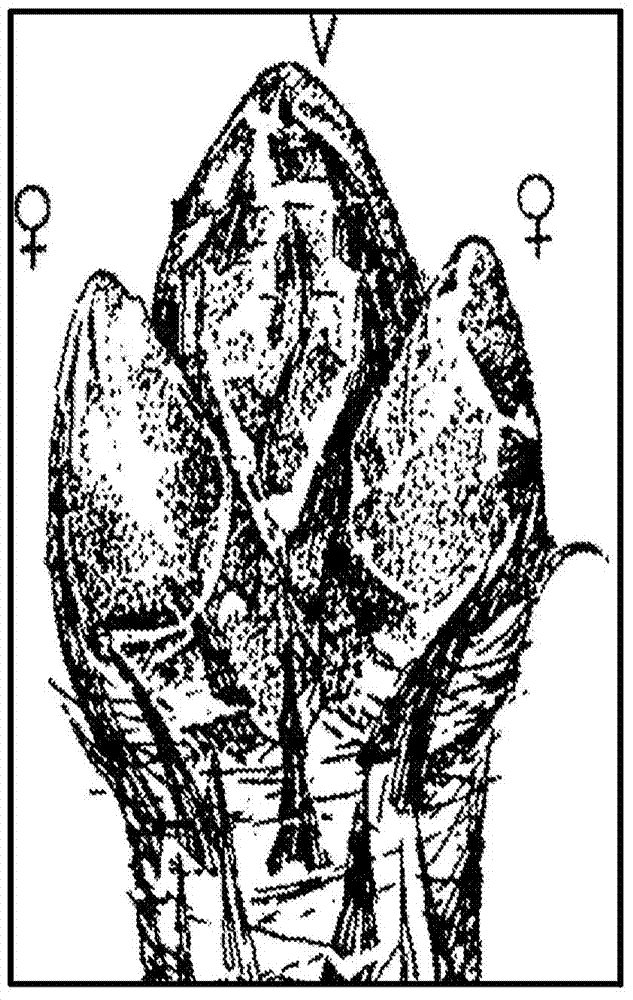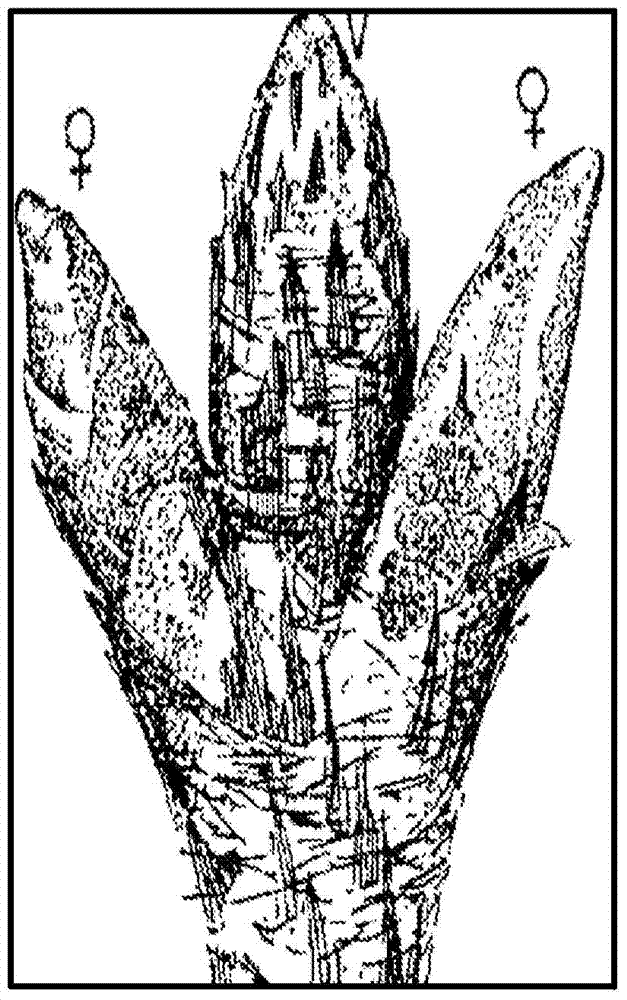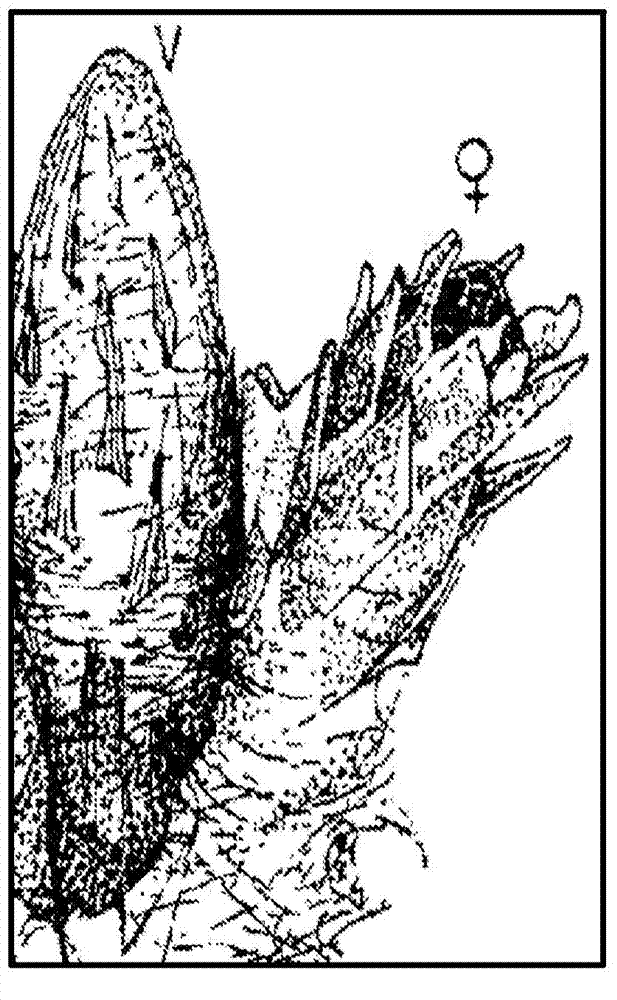Method for regulating flower bulb development in gymnosperm trees
A technique for gymnosperms and bulbs, which is applied in the field of regulating bulb development and can solve problems such as difficulties
- Summary
- Abstract
- Description
- Claims
- Application Information
AI Technical Summary
Problems solved by technology
Method used
Image
Examples
Embodiment 1
[0051] This example describes a study conducted in 2006 (Study #1) to test seven isolation (i.e., protection) bag types of different sizes, colors, and materials of construction to determine their role in delaying female cone development in Loblolly pine. Whether there is any difference in effectiveness.
[0052] Methods and Materials (#1 Study (2006))
[0053] In early February 2006, 2 breeding bags of each of the 7 bag types were installed on each of the two parent loblolly pine trees in the seed orchard: parent A (mid-development) and parent B (late development). In this study, the "middle late" parent was chosen due to delays in obtaining some bag material needed to start the study. The total number of bags installed is 2 parents x 7 bag types x 2 bags per tree = 28 bags. The 7 bag types and control treatments are described in Table 3 below.
[0054] Table 3: Barrier bag materials used in Study #1 (2006)
[0055]
[0056] figure 2 are photographs showing the vario...
Embodiment 2
[0080] This example describes a follow-up study #2 (2007) that was conducted to test other isolation (i.e. protection) bag types, all derivatives of the aluminum bag, in order to determine their effectiveness in delaying female flower development .
[0081] Fundamental :
[0082] A follow-up study #2 (2007) to the study described in Example 1 was performed to (1) test other pouch types, some of which had an insulated type; The "early" phenotype parent C is added to the parent of , so as to have a full range of phenotypes; and (3) measure the temperature difference between the inside of the bag and the outside of the bag.
[0083] method : At the beginning of February, 2006, 2 breeding bags of each of 7 bag types were installed on each of the three parental trees (A, B, C). The total number of bags installed is: (3 parents x bag type x 2 bags per tree) = 42 bags. The 7 bag types used in this study are described in Table 6 below, and as figure 2 As shown in the photos p...
Embodiment 3
[0110] This example describes a follow-up study #3 (2008) that was conducted to determine the optimal time to install barrier bags to delay flower development.
[0111] Fundamental : In study #1 and #2, as described in Examples 1 and 2, respectively, we noticed that flower development was not completely delayed, and that flowers on some parents were not delayed as much as others. Therefore, this follow-up study #3 (2008) was conducted to determine the optimal time for installation to delay processing to achieve full delay.
[0112] method :
[0113] The 4 types of aluminum bags used in this study were:
[0114] (1) Paper hot dog bags laminated with thin aluminum foil;
[0115] (2) Paper hot dog bags laminated with thick aluminum foil;
[0116] (3) Aluminum foil packaging; and
[0117] (4) Aluminum foil packaging covered by a hot dog bag.
[0118] Treatments were performed on January 10 and February 7, 2008, and flower development was observed on March 6, 2008. All fl...
PUM
 Login to View More
Login to View More Abstract
Description
Claims
Application Information
 Login to View More
Login to View More - R&D
- Intellectual Property
- Life Sciences
- Materials
- Tech Scout
- Unparalleled Data Quality
- Higher Quality Content
- 60% Fewer Hallucinations
Browse by: Latest US Patents, China's latest patents, Technical Efficacy Thesaurus, Application Domain, Technology Topic, Popular Technical Reports.
© 2025 PatSnap. All rights reserved.Legal|Privacy policy|Modern Slavery Act Transparency Statement|Sitemap|About US| Contact US: help@patsnap.com



